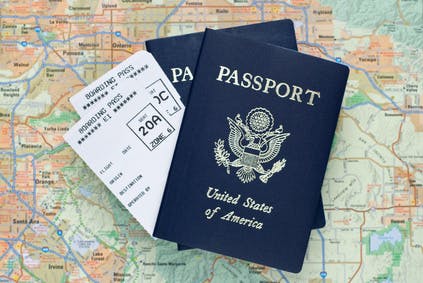By Kim Kiel Thompson
Your company has a temporary position in the Sydney, Australia office and it has been difficult to find the perfect person for the assignment.
During the selection process, you discover that your top candidate is a U.S. Lawful Permanent Resident (LPR) and that a long stay outside the U.S. could affect his LPR status and his eligibility for U.S. naturalization. He asks that, if selected, you take the necessary steps to ensure he does not lose his LPR status or his eligibility for U.S. citizenship.
The company’s immigration lawyer advises you that a LPR who remains outside the U.S. for more than one year could be considered to have relinquished his LPR status and an absence of six-to-12 months could break his continuous residence for naturalization. You expect the assignment to last up to two years and determine that the following steps are necessary to protect the candidate while he is overseas:
- Apply for a Reentry Permit – An LPR who has been absent from the U.S. for more than one year could be found to have abandoned his LPR status and be refused admission. A Reentry Permit (RP) allows a LPR to reenter the U.S. during the validity period (generally two years) under the presumption that he has not abandoned his LPR status. The LPR must apply for the RP and complete the biometrics step in the U.S. before departure. He may depart before the RP is approved. If the overseas assignment will run longer than two years, the LPR may apply for a new RP but he must return to the U.S. before the RP expires and be physically present in the U.S. when he reapplies;
- Apply to preserve residence for naturalization – A LPR must meet several requirements to naturalize, including:
- Residing continuously in the U.S. for five years (3 years if qualifying as a U.S. citizen spouse) following the granting of LPR status; and
- Being physically present in the U.S. for at least half of the qualifying period (30 or 18 months, as applicable).
When you break the continuity of residence
A break in the continuity of residence requires the LPR to reset the five (or three) year clock once he returns to the United States. Absences under six months do not break the continuity. Absences of six-to-twelve months will not break the continuity if the LPR has a reasonable explanation, e.g., employment overseas for a U.S. employer.
An absence of more than one uninterrupted year will break the chain unless the LPR files an application to preserve the continuity of residence. The LPR may file this application if he:
- Has been physically present and resided in the U.S. as a LPR for one uninterrupted year prior to the absence; and
- Will be employed overseas by the U.S. government, a U.S. research institute, a U.S. corporation engaged in foreign trade and commerce (including a U.S. majority-owned subsidiary), or an international organization of which the U.S. is a member.
You agree to file the necessary applications for the LPR and also advise him to discuss with immigration counsel the additional things he must do to maintain LPR status while overseas (e.g., filing U.S. tax returns as a resident of the U.S. and maintaining other ties with the U.S., including ownership of property, bank accounts, driver’s license).
Now you are ready to secure the necessary visa for the LPR to work and reside in Australia and make any other arrangements necessary to get him on his way to his overseas assignment.
This was originally published on Fisher & Phillips Cross Border Employer blog.
